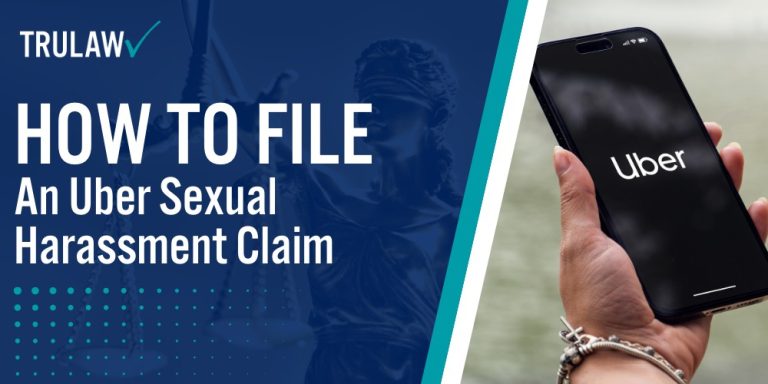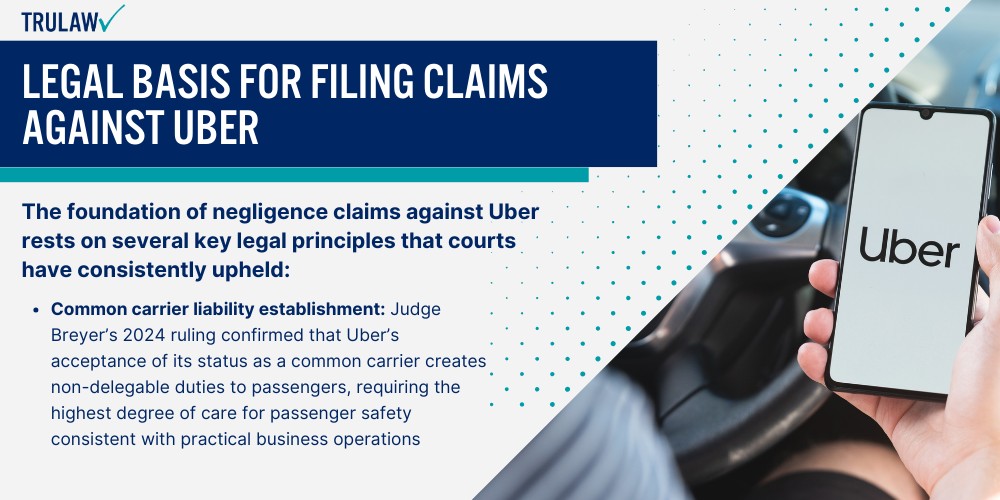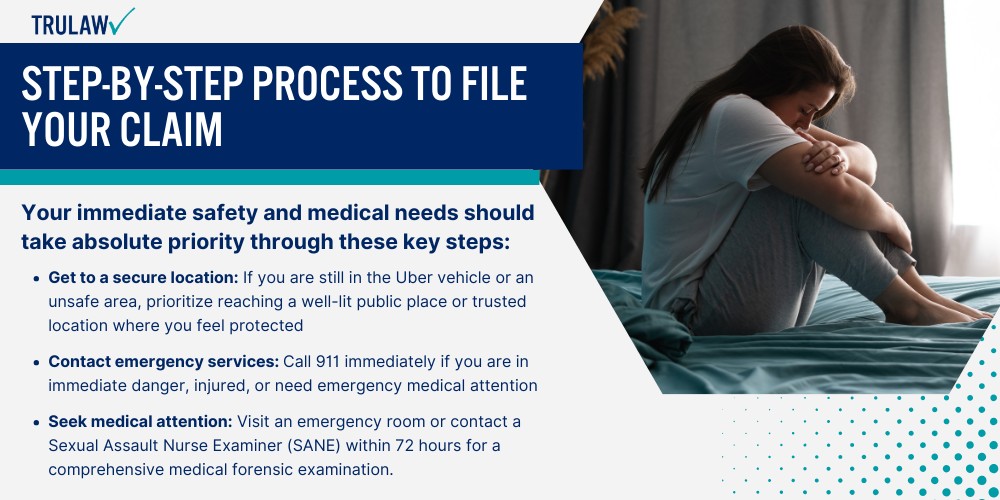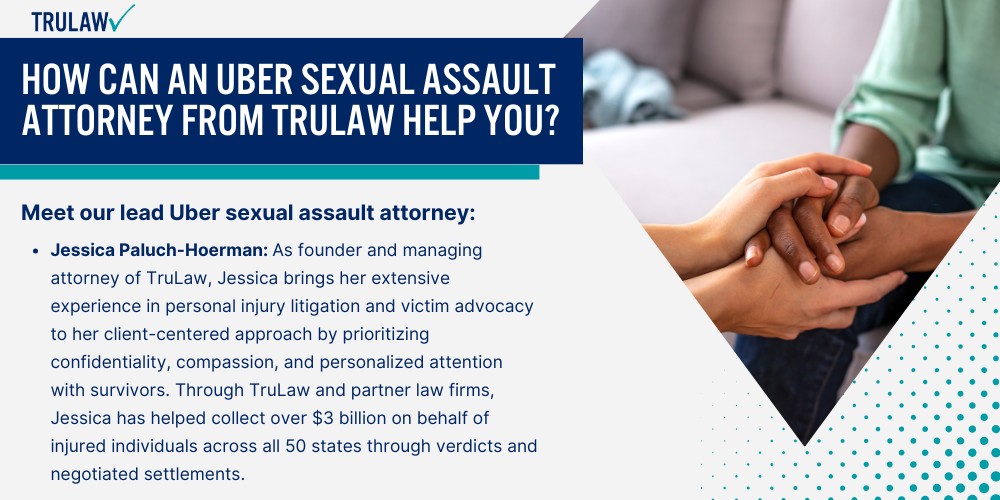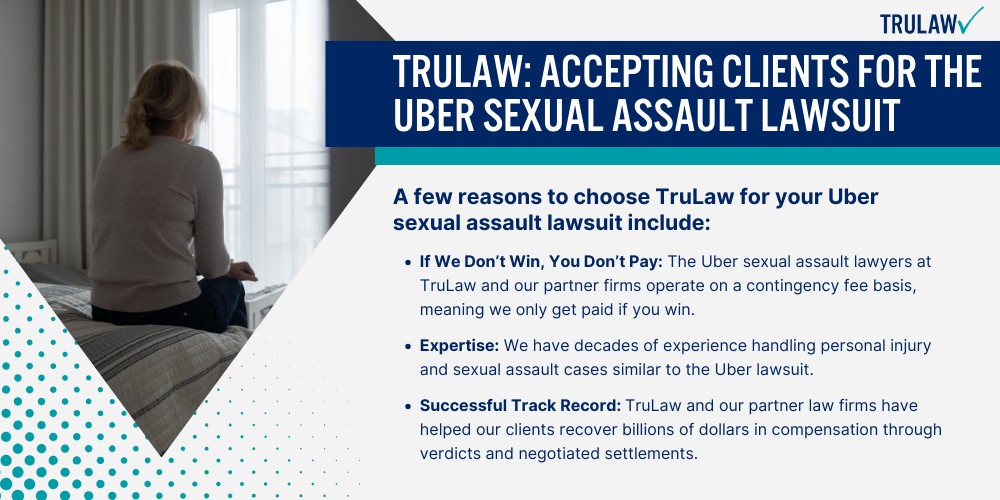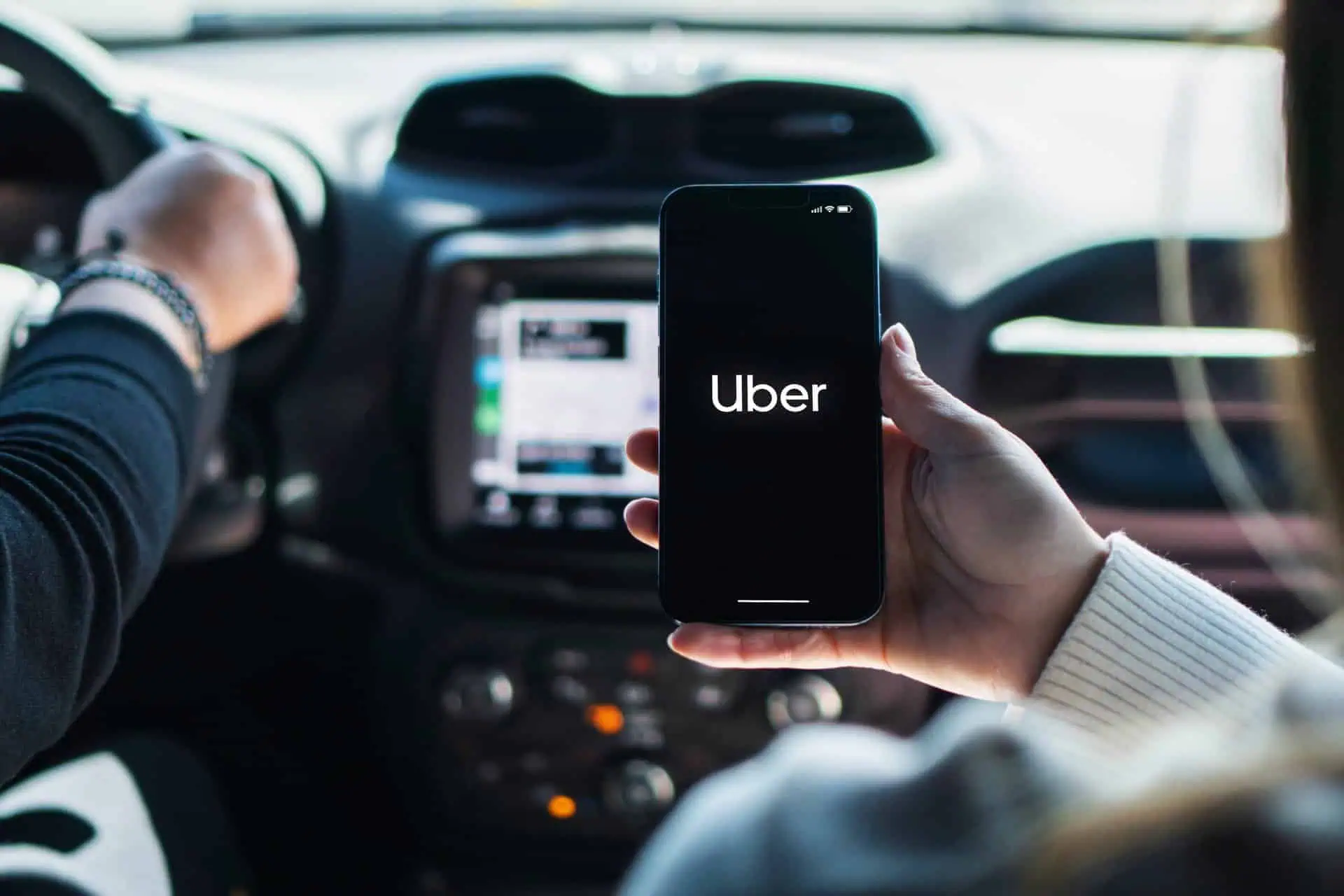Sexual harassment experienced during an Uber ride can include a variety of misconduct that violates passengers’ fundamental right to safe transportation.
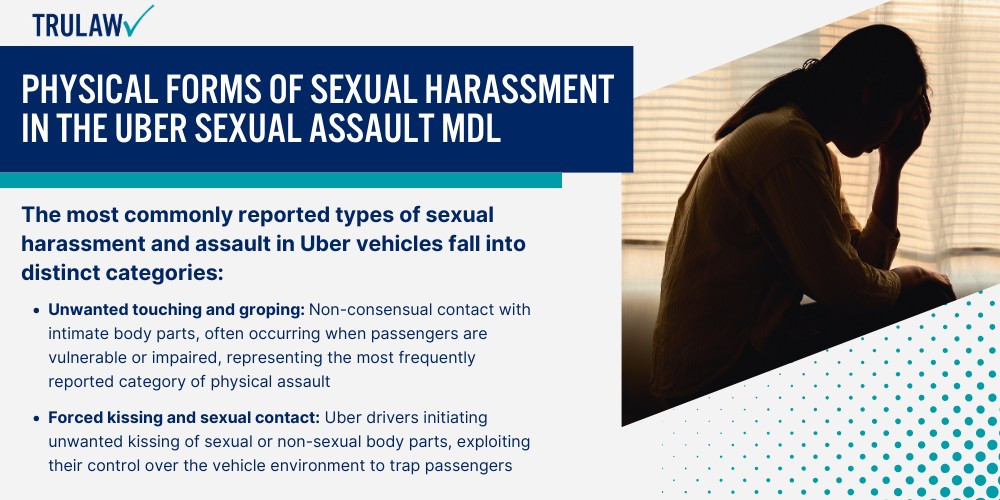
The most commonly reported types of sexual harassment and assault in Uber vehicles fall into distinct categories:
- Unwanted touching and groping: Non-consensual contact with intimate body parts, often occurring when passengers are vulnerable or impaired, representing the most frequently reported category of physical assault
- Forced kissing and sexual contact: Uber drivers initiating unwanted kissing of sexual or non-sexual body parts, exploiting their control over the vehicle environment to trap passengers
- Indecent exposure and masturbation: Drivers exposing themselves or engaging in sexual acts while passengers are trapped in moving vehicles, creating threatening environments designed to intimidate
- Rape and attempted penetration: The most severe assaults involving forced or coerced sexual penetration, often preceded by route deviations to isolated locations where passengers cannot escape
Statistical analysis of Uber’s own safety data reveals alarming patterns: drivers were the accused perpetrators in 56% of sexual assault cases from 2019-2020, with notably few female drivers in the fleet, while in the most severe cases involving rape, 91% of survivors were Uber passengers.
Among rape cases specifically, 91% of victims were riders in an Uber, with women comprising 81% of rape survivors.
These statistics underscore a clear pattern of drivers exploiting their position of control over vulnerable passengers, particularly women traveling alone, a reality that has fueled public backlash against the company’s failure to properly screen its drivers.
Between 2017 and 2022, Uber received a report of sexual assault or sexual misconduct in the United States almost every eight minutes, totaling 400,181 reports in just five years.
If you or a loved one has experienced sexual harassment or assault during an Uber ride, you may be eligible to seek compensation.
Contact TruLaw using the chat on this page to receive an instant case evaluation and determine whether you qualify to join others in filing an Uber sexual harassment lawsuit today.
Psychological Trauma Criteria for Sexual Harassment MDLs
Recognizing warning signs of potential harassment can help passengers identify dangerous situations before they escalate, though survivors should never blame themselves for failing to detect these indicators.
TruLaw partners with litigation leaders who understand that predatory behavior often follows recognizable patterns that Uber has failed to address through adequate driver screening and safety measures.
Common warning signs and red flags that frequently precede or accompany harassment include behaviors designed to test boundaries and isolate victims:
- Route deviations without explanation: Drivers departing from GPS-directed routes, taking longer paths through isolated areas, or making unauthorized stops that isolate passengers from help
- Inappropriate personal questions: Inquiries about relationship status, living arrangements, sexual preferences, or whether passengers live alone, particularly escalating when passengers appear vulnerable
- Unprofessional behavior and boundary violations: Comments about physical appearance, requests for personal contact information, attempts to extend rides beyond destinations, or suggestions to continue interactions after trips
- Vehicle control manipulation: Locking doors unnecessarily, refusing to stop when requested, speeding to intimidate passengers, or claiming mechanical issues to justify stopping in isolated locations
Passengers experiencing any of these behaviors should trust their instincts and take immediate action to protect themselves, including ending the ride early, contacting emergency services, and reporting the incident through the app.
According to EEOC guidelines, sexual harassment includes unwelcome sexual advances, requests for sexual favors, and other verbal or physical conduct of a sexual nature that creates an intimidating, hostile, or offensive environment, standards enforced by the Equal Employment Opportunity Commission.
TruLaw recognizes that every incident of harassment in an Uber represents a failure of the company’s duty of care to passengers who trusted the platform for safe transportation.
Contact TruLaw using the chat on this page to receive an instant case evaluation and determine whether you qualify to join others in filing an Uber sexual harassment lawsuit today.
